Grow Bok Choy Indoors? Absolutely! Imagine fresh, crisp bok choy, ready to harvest right from your windowsill, even when the weather outside is frightful. Forget those sad, wilted greens at the grocery store – we’re talking vibrant, homegrown goodness, and I’m here to show you how incredibly easy it is.
Bok choy, also known as pak choi, has been a staple in Asian cuisine for centuries, gracing everything from stir-fries to soups with its mild, slightly sweet flavor. Cultivating it dates back to the 5th century in China, and its popularity has since spread worldwide. But did you know you don’t need a sprawling garden to enjoy this nutritious vegetable?
In today’s busy world, finding time and space for a traditional garden can be a challenge. That’s where the magic of indoor gardening comes in! Learning how to grow bok choy indoors offers a fantastic solution for urban dwellers, apartment residents, or anyone simply looking to add a touch of green to their living space. Plus, it’s a budget-friendly way to enjoy fresh produce year-round. Ready to ditch the store-bought stuff and embrace the joy of homegrown bok choy? Let’s get started!
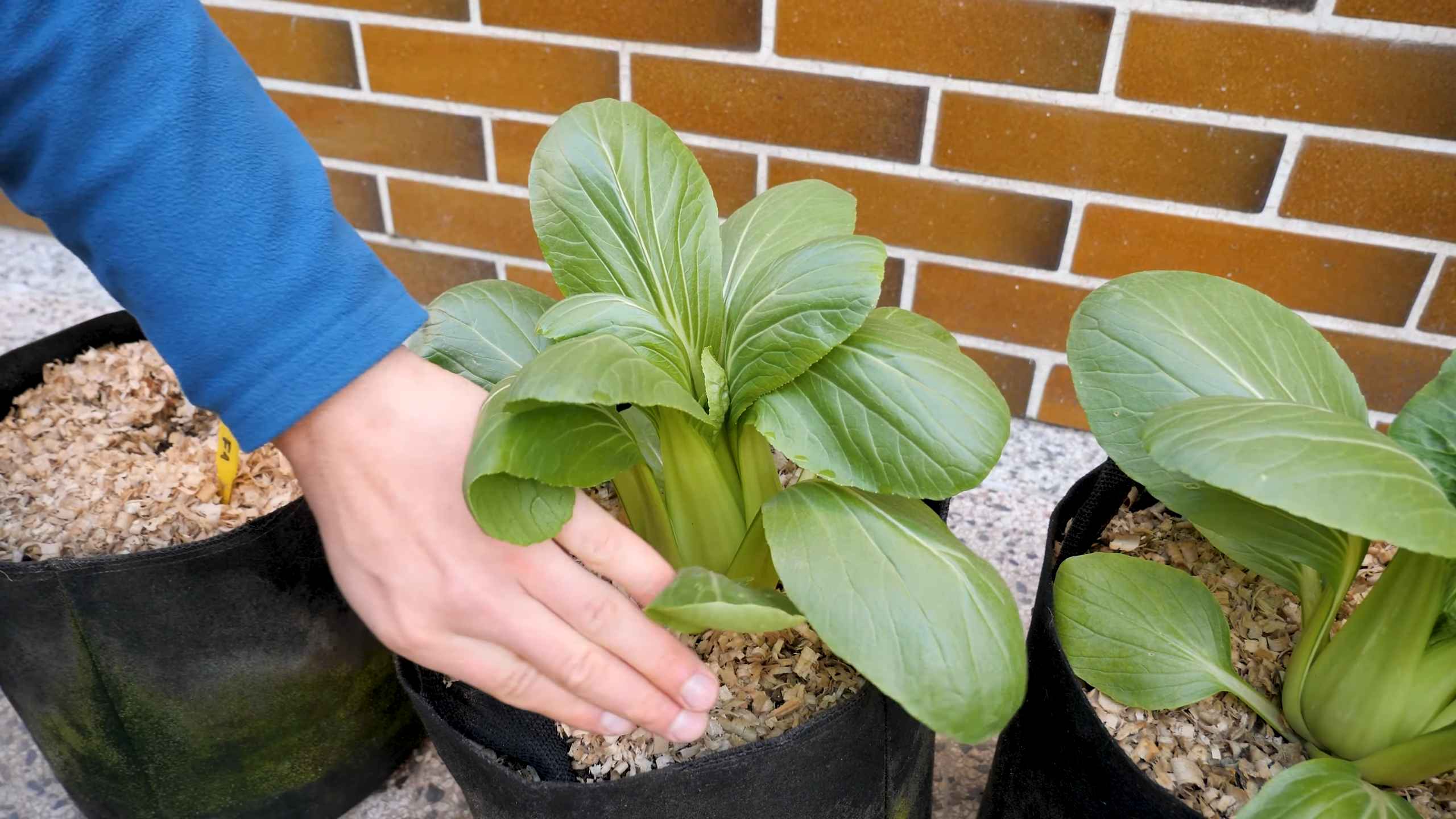
Growing Bok Choy Indoors: A Beginner’s Guide
Hey there, fellow plant enthusiasts! Ever thought about growing your own fresh, crisp bok choy right in your kitchen? It’s easier than you might think, and I’m here to walk you through the entire process. Forget those wilted, overpriced greens at the supermarket – we’re about to have a bok choy bonanza!
Choosing the Right Bok Choy Variety
First things first, let’s talk varieties. While most bok choy will grow indoors, some are better suited than others.
* Dwarf Varieties: These are your best bet. They stay smaller, making them perfect for containers. Look for names like ‘Toy Choy’ or ‘Baby Bok Choy.’
* Fast-Maturing Varieties: Since we’re growing indoors, we want something that matures quickly. This means you’ll be harvesting sooner!
Setting Up Your Indoor Bok Choy Garden
Okay, now for the fun part – creating the perfect environment for our bok choy babies.
* Containers: Choose containers that are at least 6 inches deep and wide. Good drainage is crucial, so make sure your pots have drainage holes. I personally love using terracotta pots, but plastic works just fine too.
* Soil: Bok choy loves well-draining, nutrient-rich soil. A good potting mix is essential. You can also amend your potting mix with compost or aged manure for extra nutrients.
* Lighting: This is super important! Bok choy needs at least 6 hours of sunlight per day. If you don’t have a sunny windowsill, don’t worry! You can use grow lights. Fluorescent or LED grow lights work great. Position the lights a few inches above the plants.
* Temperature: Bok choy prefers cooler temperatures, ideally between 60-70°F (15-21°C). Avoid placing your plants near heat sources like radiators.
Planting Your Bok Choy Seeds
Alright, let’s get our hands dirty!
1. Prepare the Soil: Fill your containers with your chosen potting mix, leaving about an inch of space at the top. Gently pat down the soil.
2. Sow the Seeds: Sprinkle the bok choy seeds evenly over the surface of the soil. You can sow them fairly densely, as we’ll thin them out later.
3. Cover the Seeds: Lightly cover the seeds with a thin layer of soil (about ¼ inch).
4. Water Gently: Water the soil gently using a watering can or spray bottle. You want to moisten the soil without disturbing the seeds.
5. Provide Humidity: Cover the containers with plastic wrap or a humidity dome to create a humid environment. This will help the seeds germinate.
6. Place in a Warm Location: Place the containers in a warm location (around 70°F or 21°C) until the seeds germinate.
Caring for Your Bok Choy Seedlings
Once your seeds sprout (usually within a week), it’s time to give them some extra TLC.
1. Remove the Cover: Once the seedlings emerge, remove the plastic wrap or humidity dome.
2. Provide Adequate Light: Ensure the seedlings are getting enough light, either from a sunny windowsill or grow lights.
3. Thin the Seedlings: Once the seedlings have a few true leaves (the second set of leaves that appear after the initial seed leaves), it’s time to thin them out. This means removing some of the seedlings to give the remaining ones more space to grow. Aim for a spacing of about 2-3 inches between plants. Don’t just yank them out! Gently snip them off at the soil line with scissors.
4. Water Regularly: Keep the soil consistently moist, but not soggy. Water when the top inch of soil feels dry to the touch. Avoid overwatering, as this can lead to root rot.
5. Fertilize: Bok choy is a heavy feeder, so it needs regular fertilization. Use a balanced liquid fertilizer diluted to half strength every two weeks. I like to use fish emulsion or seaweed extract.
6. Monitor for Pests: Keep an eye out for common pests like aphids, slugs, and cabbage worms. If you spot any pests, you can try removing them by hand or using an insecticidal soap.
Harvesting Your Bok Choy
The best part! You can start harvesting your bok choy when the leaves are about 4-6 inches long. This usually takes about 30-45 days from planting.
1. Harvesting Individual Leaves: You can harvest individual leaves as needed, starting with the outer leaves. This will allow the plant to continue producing new leaves.
2. Harvesting the Whole Plant: Alternatively, you can harvest the entire plant by cutting it off at the base.
3. Enjoy Your Harvest: Wash the bok choy thoroughly and enjoy it in salads, stir-fries, soups, or any other dish you like!
Troubleshooting Common Problems
Even with the best care, you might encounter a few challenges. Here are some common problems and how to fix them:
* Leggy Seedlings: This means your seedlings aren’t getting enough light. Move them to a sunnier location or use grow lights.
* Yellowing Leaves: This could be a sign of overwatering, underwatering, or nutrient deficiency. Check the soil moisture and adjust your watering accordingly. If the soil is consistently moist, let it dry out a bit before watering again. If the leaves are yellowing all over, it could be a nutrient deficiency. Try fertilizing with a balanced liquid fertilizer.
* Pests: As mentioned earlier, keep an eye out for pests. Insecticidal soap is a good option for controlling most pests.
* Bolting: Bolting is when the plant starts to flower prematurely. This is usually caused by stress, such as high temperatures or inconsistent watering. To prevent bolting, keep the temperature cool and water regularly.
Section: Maximizing Your Bok Choy Yield
Want to get the most out of your indoor bok choy garden? Here are a few extra tips:
* Succession Planting: Plant new seeds every few weeks to ensure a continuous harvest.
* Rotating Crops: If you’re growing other vegetables indoors, rotate your crops to prevent soil depletion.
* Using Companion Plants: Some plants can help bok choy grow better. For example, chamomile can help repel pests.
* Proper Air Circulation: Ensure good air circulation around your plants to prevent fungal diseases. You can use a small fan to circulate the air.
* Regularly Check Soil pH: Bok choy prefers a slightly acidic soil pH (around 6.0-7.0). You can test your soil pH using a soil testing kit. If the pH is too high, you can lower it by adding sulfur or peat moss. If the pH is too low, you can raise it by adding lime.
Section: Advanced Techniques for Indoor Bok Choy Growing
Feeling adventurous? Here are some advanced techniques to take your indoor bok choy growing to the next level:
* Hydroponics: Grow your bok choy in water instead of soil! Hydroponics can be a fun and efficient way to grow vegetables indoors.
* Aquaponics: Combine hydroponics with aquaculture (raising fish). The fish waste provides nutrients for the plants, and the plants filter the water for the fish.
* Vertical Gardening: Grow your bok choy in a vertical garden to save space.
* Using a Grow Tent: A grow tent provides a controlled environment for your plants, allowing you to optimize temperature, humidity, and lighting.
* Experimenting with Different Varieties: Try growing different varieties of bok choy to see which ones you like best.
Section: Bok Choy Recipes to Enjoy Your Harvest
Now that you’ve grown your own bok choy, it’s time to enjoy the fruits (or rather, vegetables) of your labor! Here are a few delicious bok choy recipes:
* Stir-Fried Bok Choy with Garlic: A classic and simple dish that highlights the fresh flavor of bok choy.
* Bok Choy Soup: A comforting and nutritious soup that’s perfect for a cold day.
* Bok Choy Salad with Sesame Dressing: A refreshing and flavorful salad that’s packed with nutrients.
* Grilled Bok Choy: A simple and delicious way to cook bok choy.
* Bok Choy Dumplings: A fun and flavorful way to use bok choy in a dumpling filling.
Growing bok choy indoors is a rewarding experience that allows you to enjoy fresh, healthy greens year-round. With a little bit of care and attention, you can have a thriving indoor bok choy garden. So, grab your seeds, get your hands dirty, and start growing! Happy gardening!
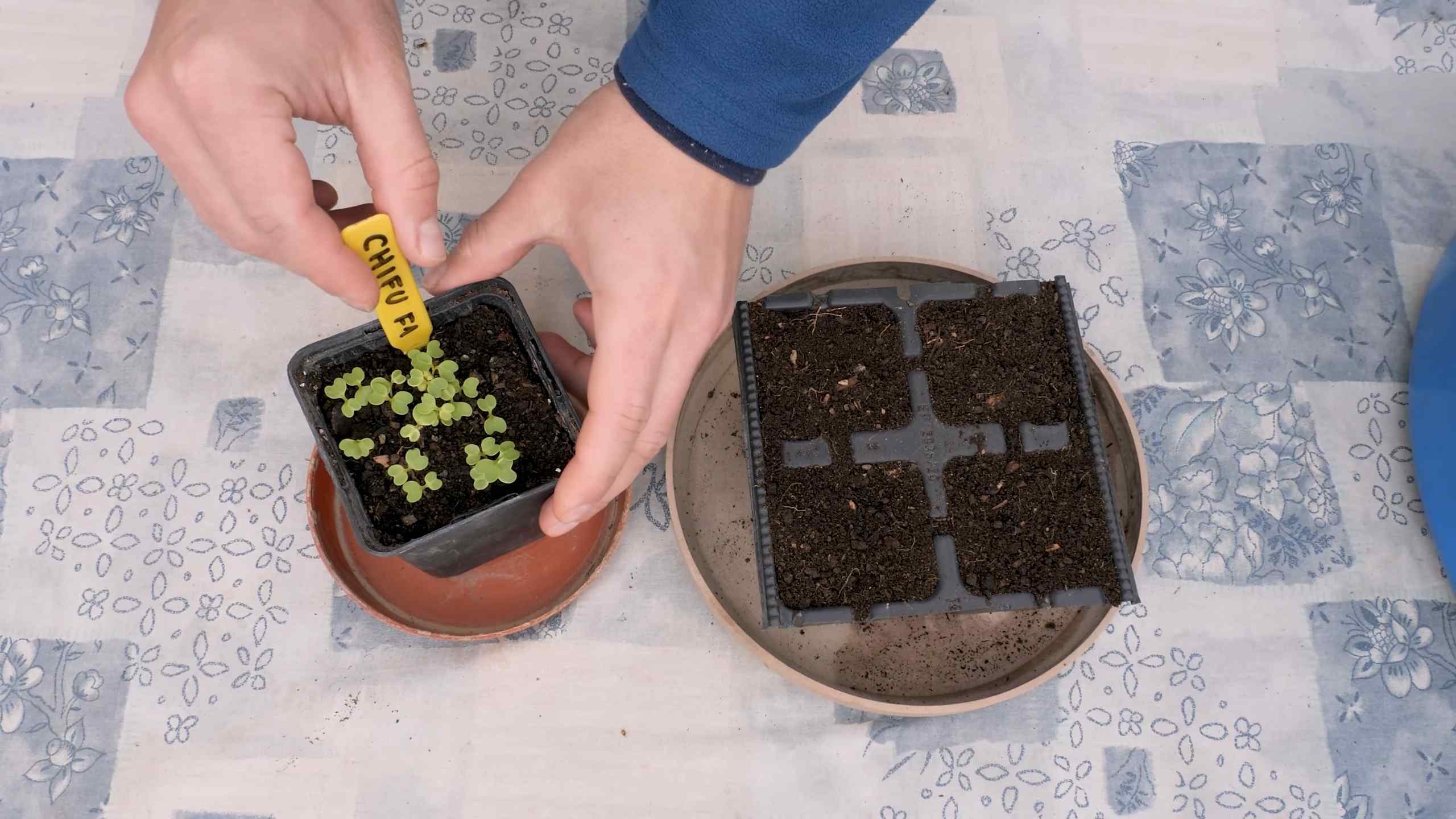
Conclusion
So, there you have it! Growing your own bok choy indoors is not only achievable, but it’s also incredibly rewarding. Imagine fresh, crisp bok choy readily available, adding a vibrant touch to your stir-fries, soups, and salads, all year round. No more relying solely on grocery store produce, often shipped from afar and lacking that just-picked freshness. This DIY approach empowers you to control the quality and source of your food, contributing to a more sustainable and healthier lifestyle.
This method of indoor bok choy cultivation is a must-try for several reasons. First, it’s incredibly space-efficient. Even if you live in a small apartment, you can easily dedicate a corner or windowsill to your bok choy garden. Second, it’s cost-effective. Once you have the initial setup, the ongoing costs are minimal, primarily consisting of water and occasional fertilizer. Third, and perhaps most importantly, it’s incredibly satisfying. There’s something truly special about nurturing a plant from seed to harvest, witnessing its growth, and then enjoying the fruits (or rather, the leaves) of your labor.
But don’t stop there! Once you’ve mastered the basics of growing bok choy indoors, feel free to experiment with different varieties. Try growing baby bok choy for a more delicate flavor and texture, or explore colorful varieties like red bok choy for a visually stunning addition to your meals. You can also experiment with different growing mediums, such as hydroponics, for an even more efficient and controlled growing environment. Consider companion planting with herbs like basil or chives to deter pests and enhance the flavor of your bok choy.
The key to successful indoor bok choy cultivation lies in providing adequate light, consistent moisture, and proper ventilation. Don’t be afraid to adjust your approach based on your specific environment and the needs of your plants. Observe your bok choy closely, and you’ll quickly learn to recognize the signs of a happy and healthy plant.
We wholeheartedly encourage you to give this DIY trick a try. It’s a simple, affordable, and incredibly rewarding way to enjoy fresh, homegrown bok choy, regardless of the season or your living situation. And most importantly, we want to hear about your experience! Share your tips, tricks, and successes (and even your challenges!) in the comments below. Let’s create a community of indoor bok choy enthusiasts, sharing our knowledge and inspiring others to embrace the joys of homegrown produce. Let us know what kind of fertilizer you used, what kind of lighting worked best, and any other insights you gained along the way. Your feedback will help others succeed in their own indoor gardening endeavors. So, grab your seeds, prepare your pots, and get ready to embark on a delicious and rewarding journey of growing bok choy indoors!
Frequently Asked Questions (FAQ)
What are the best varieties of bok choy to grow indoors?
While most bok choy varieties can be grown indoors, some are better suited for container gardening than others. Baby bok choy varieties, such as ‘Mei Qing Choi’ and ‘Toy Choi,’ are excellent choices due to their compact size and relatively quick growth cycle. These varieties mature faster and require less space than larger varieties. Other good options include ‘Joi Choi’ and ‘Shanghai Green,’ which are also relatively compact and easy to manage indoors. Experimenting with different varieties can be fun, but starting with a smaller, faster-growing variety is generally recommended for beginners.
How much light does bok choy need when grown indoors?
Bok choy requires a significant amount of light to thrive, ideally 6-8 hours of direct sunlight per day. However, if you don’t have access to a sunny windowsill, you can supplement with artificial lighting. LED grow lights are an excellent option, as they are energy-efficient and provide the full spectrum of light that plants need for photosynthesis. Position the grow lights a few inches above the bok choy plants and adjust the height as the plants grow. A timer can be used to ensure consistent light exposure. Insufficient light can lead to leggy growth and reduced yields, so providing adequate light is crucial for successful indoor bok choy cultivation.
What type of soil is best for growing bok choy indoors?
Bok choy prefers well-draining, nutrient-rich soil. A good potting mix specifically formulated for vegetables is ideal. You can also create your own mix by combining equal parts of potting soil, compost, and perlite or vermiculite. Compost provides essential nutrients, while perlite or vermiculite improves drainage and aeration. Avoid using garden soil, as it can be too heavy and may contain pests or diseases. Ensure that the pots you use have drainage holes to prevent waterlogging, which can lead to root rot.
How often should I water my indoor bok choy plants?
Water bok choy regularly to keep the soil consistently moist but not waterlogged. Check the soil moisture level daily by sticking your finger about an inch into the soil. If the soil feels dry, it’s time to water. Water deeply until excess water drains out of the drainage holes. Avoid overhead watering, as this can promote fungal diseases. Instead, water at the base of the plants. The frequency of watering will depend on factors such as temperature, humidity, and the size of the pot.
What kind of fertilizer should I use for indoor bok choy?
Bok choy is a heavy feeder and benefits from regular fertilization. Use a balanced, water-soluble fertilizer specifically formulated for vegetables. Follow the instructions on the fertilizer package for application rates. You can also use organic fertilizers, such as compost tea or fish emulsion. Fertilize every 2-3 weeks during the growing season. Avoid over-fertilizing, as this can lead to nutrient burn.
How do I deal with pests and diseases on my indoor bok choy plants?
Indoor bok choy plants are generally less susceptible to pests and diseases than outdoor plants, but they can still be affected. Common pests include aphids, spider mites, and whiteflies. Inspect your plants regularly for signs of infestation. If you find pests, you can try washing them off with a strong stream of water or using insecticidal soap or neem oil. For fungal diseases, such as powdery mildew, ensure good air circulation and avoid overhead watering. You can also use a fungicide if necessary.
How long does it take for bok choy to mature when grown indoors?
The time it takes for bok choy to mature depends on the variety and growing conditions. Baby bok choy varieties typically mature in 30-40 days, while larger varieties may take 45-60 days. You can start harvesting the outer leaves when they reach a usable size, or you can harvest the entire plant at once.
Can I grow bok choy indoors year-round?
Yes, you can grow bok choy indoors year-round, provided you provide adequate light, water, and nutrients. Indoor growing allows you to control the environment and avoid the seasonal limitations of outdoor gardening.
How do I harvest bok choy grown indoors?
You can harvest bok choy by either cutting off the outer leaves as needed or harvesting the entire plant at once. To harvest the entire plant, cut it off at the base with a sharp knife. For continuous harvesting, cut off the outer leaves, leaving the inner leaves to continue growing.
Is growing bok choy indoors organic?
Yes, growing bok choy indoors can be organic if you use organic potting mix, organic fertilizers, and organic pest control methods. This allows you to control the inputs and ensure that your bok choy is grown without synthetic chemicals.

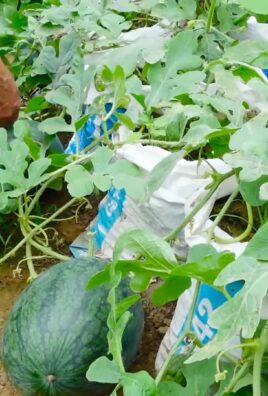
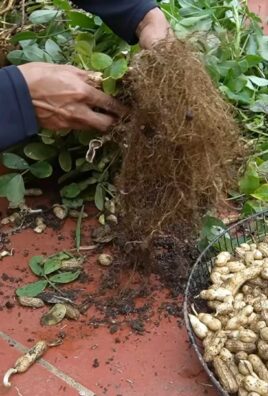
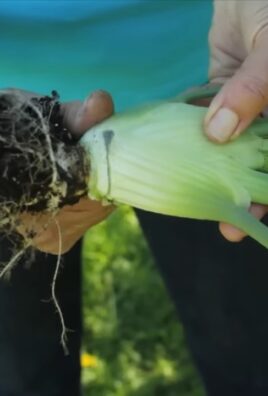
Leave a Comment